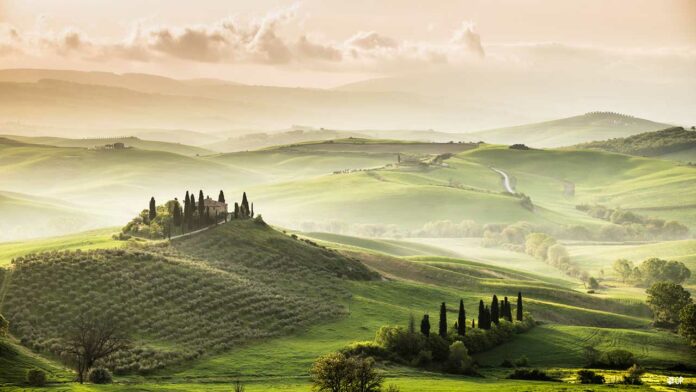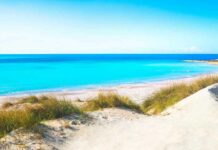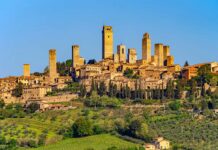If Tuscany offers tourists an unrivalled cultural and historical heritage, it is also an ideal destination for appreciating natural beauty. Its landscape of hills, mountains and plains offers countless opportunities for outdoor activities or simply a trip out of town.
Florence is surrounded by hills, gentle valleys and luxuriant vineyards. Climbing them is easy, both on foot (if you are keen on trekking then it will just be a stroll for you) and on the numerous buses departing from the city centre. Over the years the hill of Fiesole has been the source of inspiration for artists, spiritual figures, noble families, writers and entrepreneurs. From this privileged observatory, dotted with villas, museums, archaeological excavations, churches and convents, you can enjoy beautiful views of Florence and the Florentine countryside. If you love panoramas, another unmissable spot is the small town of Settignano, this too easy to reach from the city centre; in the past it has been chosen as a residence by painter Telemaco Signorini, poet Gabriele d’Annunzio and writer Mark Twain, all fascinated by its gentle hills and calm atmosphere.
The very famous Chianti zone, renowned for its vineyards, verdant valleys, rows of cypresses, olive groves, towns and abbeys built on hilltops, is around half an hour by car from the centre of Florence. If you are lucky enough to be there between September and November you can witness two key events for the economy and culture of the territory: the harvesting of grapes and olives. Can you think of anything more romantic than enjoying a picnic on a warm late summer day, sipping new wine and tasting the speciality of the location, surrounded by olive groves and cypress trees in the surreal peacefulness of the Chianti hills?
Let’s now leave this idyllic setting and move towards a wilder, more barren territory, that of the Crete Senesi. Located in the area south-east of Siena, the crete are clay hills, the result of the continuous erosion of the sea sediments that covered the zone millions of years ago. These bare, softly undulating hills, with their characteristic grey-blue colour and almost lunar appearance, are dotted with cypresses and farmhouses and still encapsulate the essence of the most authentic Tuscany; they are far removed from the tourist routes, rich in traces and remains of ancient civilisations, picturesque medieval towns and culinary festivals (of which that of the white truffle, typical of the zone, stands out in particular).
Also in the province of Siena, the evocative Val d’Orcia, a protected natural area in southern Tuscany and characterised by a unique landscape, is not to be missed: gentle hills covered with wheat fields, olive groves, vineyards, cypresses, beech and chestnut woods and dotted with rural houses, castles and small medieval towns such as San Quirico, Pienza and Castiglione. Its food and wine products are world-famous, from Brunello di Montalcino to cured meats, from extra virgin olive oil to truffles. The area is also a transit point for the pilgrimage routes of the ancient Via Francigena.
Between Tuscany and Lazio lies the vast territory of the Maremma, which overlooks the Tyrrhenian Sea. A varied natural paradise that includes long beaches of fine sand, lush pine forests, green cultivated hills, thermal areas and mountains covered in thick forests. An ideal environment for horse riding or trekking itineraries and an area devoted to the production of excellent wines.
Finally, the seven major islands of the Tuscan Archipelago (the largest being the Elba Island) and the six minor ones represent a precious natural heritage, due to their geographical position. Different in landscape, climate and morphology, they are a summer holiday destination and a true refuge in nature for those seeking moments of relaxation.










